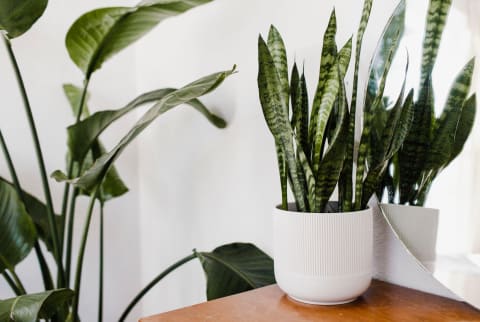Advertisement
This Hybrid Plant Purifies The Air In Your Home By Imitating A Human Liver


It's the time of year when we're spending more time inside. And while we're staying warm and cozy, that means less air flow and potentially extra-long exposure to harmful toxins inside our home. You may be thinking "but my home's air is clean." The reality is these toxins are not always detectable by our senses and are sneaky, coming off our furniture, cleaning supplies, and appliances. For example, chloroform can enter the home through chlorinated water, and benzene can come from gasoline via your shower as well as from boiling hot water. So it's best to assume they're there and take action.
Scientists at the University of Washington are doing just that. Stemming from an interest in finding a way to remove chloroform and benzene (toxic compounds linked to cancer) from the home, the scientists engineered a houseplant modified with rabbit DNA and found it was successful in reducing the pollutant levels.
First, they set out to create what Stuart Strand, senior author of the study, calls a "green liver." They focused on the protein 2E1, which helps the human liver break down alcohol. Identifying that this protein is also present in rabbits, they introduced the rabbit gene that produces the protein to the plant pothos ivy.
On Wednesday, the new study1 published in Environmental Science and Technology, reported the hybrid plant was successful in dramatically reducing chloroform and benzene. They exposed regular plants and plants with the rabbit DNA to the pollutants and found that the hybrid plant reduced the level of benzene in the tube by 75 percent in eight days and the level of chlorine by 82 percent in three days.
The scientists are already researching whether they could use this same formula to combat other common household toxins like formaldehyde, which is present in some wood floors and cabinets.
While this is a groundbreaking study, Strand points out that it would not be enough to have this plant sitting in your home in still air. The plant would ideally be a part of an air filter that would purify air circulated by a fan. This technology has not yet been developed, but if created, the next wave of air filters could truly be a breath of fresh air.
There is more research to be done to determine the technology needed to effectively use this hybrid plant and how this will look in our homes, but as we continue to expand the conversation of wellness to include our home environments, this is undoubtedly an exciting discovery.
While this hybrid plant is not available to the public yet, in the meantime, you'll want to crack open a window in your home for even a few minutes, toss out products with volatile organic compounds, and definitely buy a houseplant (even though it doesn't have superhuman powers quite yet).